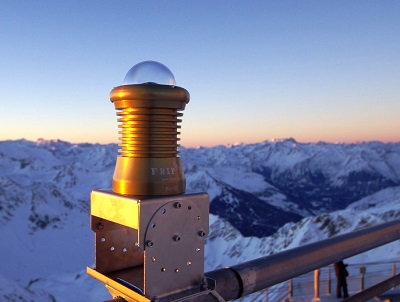In 2013, a large meteorite exploded above the Russian town of Chelyabinsk. This explosion led the public and authorities worldwide to realize that this could happen again at any time, anywhere.
The number of meteorites that fall in France each year is estimated at about 10, but no more than one every ten years is actually observed. That’s what propelled the Observatoire de Paris, the largest national research center for astronomy, to launch FRIPON — a unique interconnected network that will search for meteorites. Eventually, FRIPON will consist of 100 cameras spread out all over France, that will keep a 360° watch sky, both night and day.

The system was made in collaboration by the Observatoire de Paris, of Muséum national d’Histoire naturelle, of Université Paris-Sud, of Université Aix-Marseille and of CNRS, and aims to detect meteorite falls, measure their trajectories and estimate their strewnfields so that field search campaigns can be organized.
About three to nine cameras will be set up per region, about 62 miles away from one another on roofs of observatories, universities, natural history and other museums and scientific outreach association.
The camera locations are varied and the program has close to 150 participants so far.
The easy-to-install cameras are equipped with a fisheye lens enabling a 360° view of the sky on a single image. They are connected to computers running software that was developed specifically to analyze images and detect luminous events. When a detection takes place, a signal is sent to the mainframe located in Université Paris-Sud, which collects data in real-time from the whole network.
Currently, the entire computing chain is functional and over 60 cameras are working order.
“This setup allows us to detect incoming objects in real time and from several angles, making it possible to compute their trajectories in 3D, estimate their speed and determine their potential fall location with a precision of the order of a few hundred meters,” said François Colas, the Principal investigator of the FRIPON project at Observatoire de Paris, within the Institut de mécanique céleste et de calcul des éphémérides.

Comments are closed, but trackbacks and pingbacks are open.